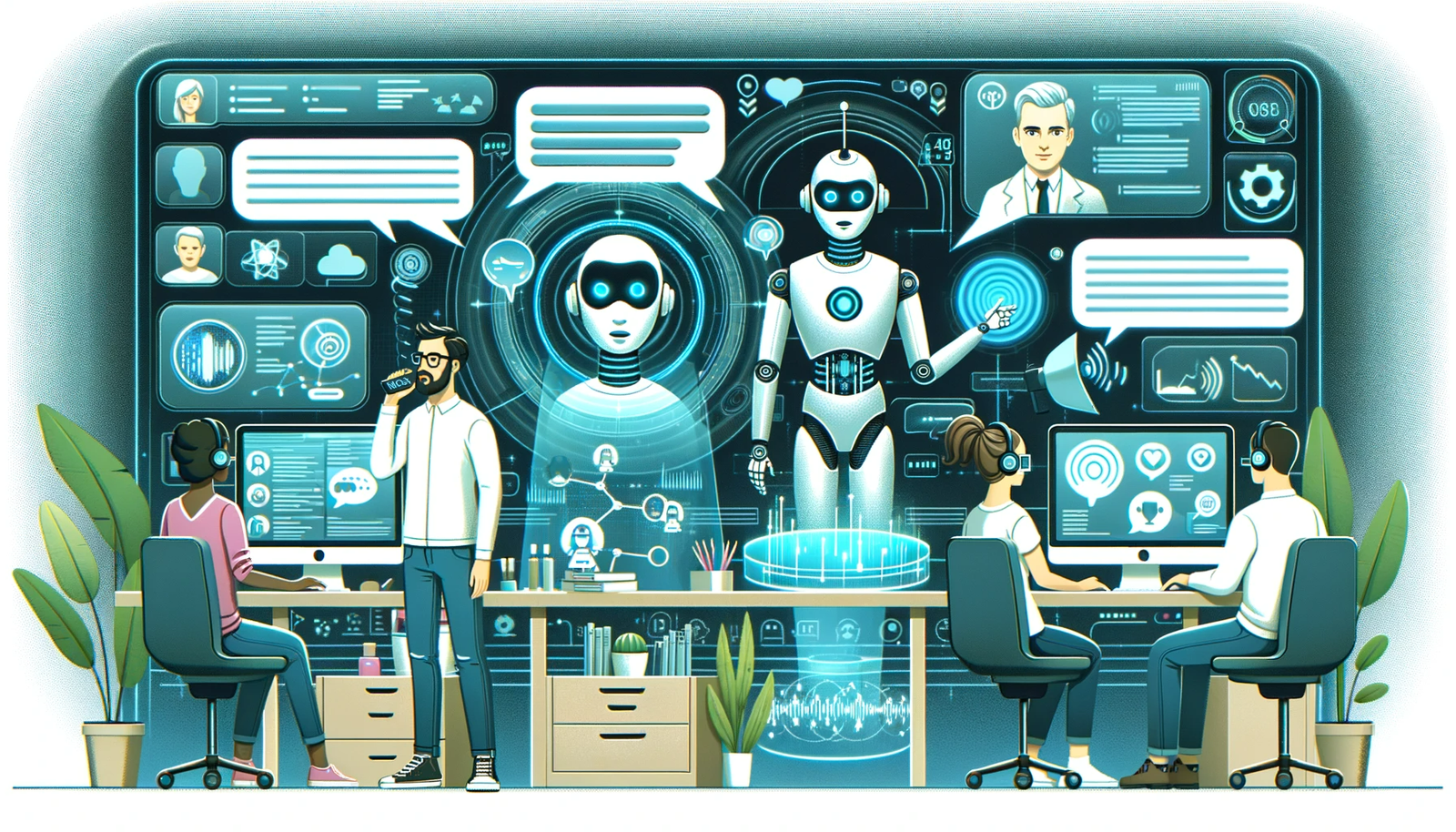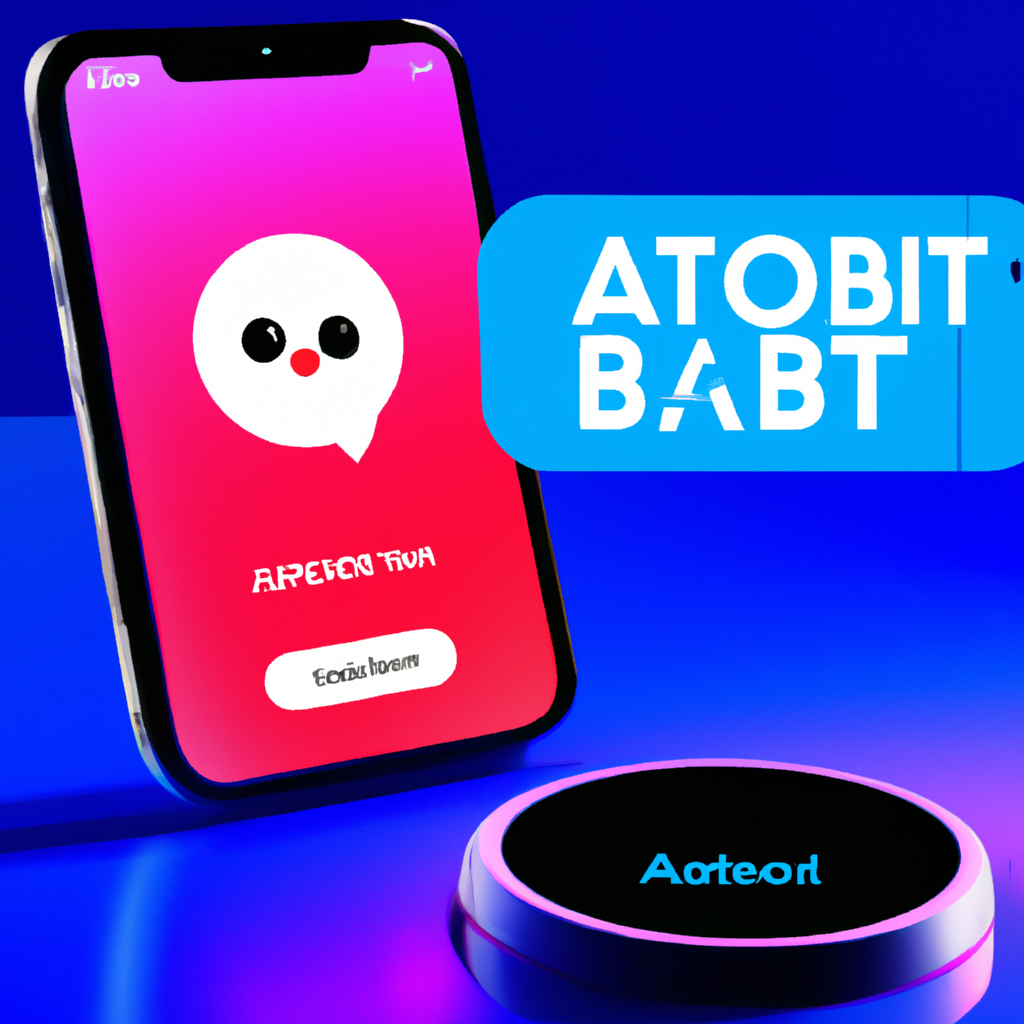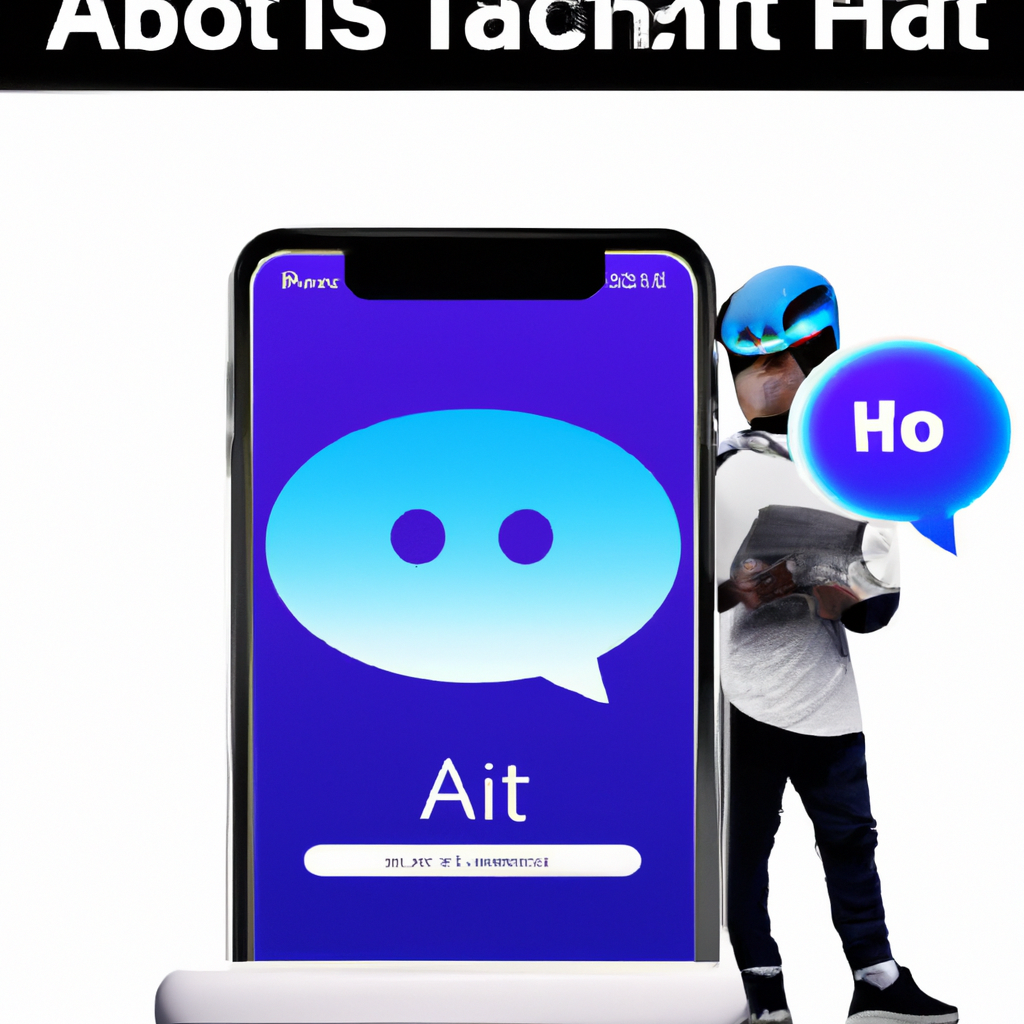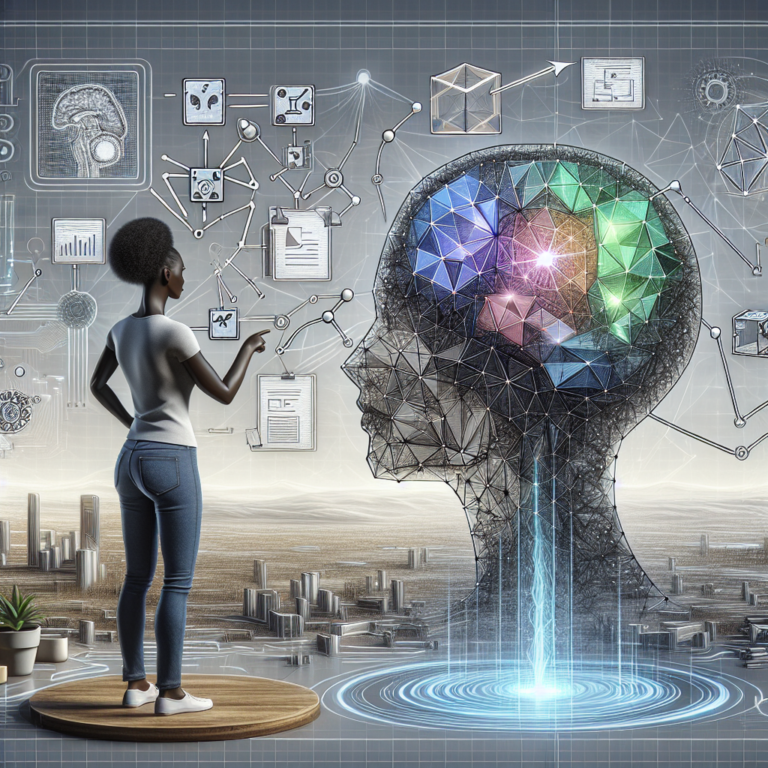
Imagine having a virtual assistant that can engage in meaningful conversations with your customers, answer their queries, and provide personalized recommendations. With advancements in Artificial Intelligence (AI), building chatbots has become easier than ever before. Using AI techniques such as natural language processing and machine learning, you can create intelligent chatbots that understand and respond to human language.
In this article, we will explore how you can leverage AI to build chatbots that effectively communicate and enhance customer interactions. Whether you are a business owner or a developer, this guide will provide you with the necessary insights to create chatbots that revolutionize customer service.
Understanding How to Build Chatbots
What are chatbots?

Chatbots are computer programs designed to simulate human conversation and interact with users through chat interfaces. They are powered by Artificial Intelligence (AI) technologies, allowing them to understand and respond to user queries or commands.
Chatbots can be integrated into various platforms such as messaging apps, websites, or voice assistants. They offer a convenient and efficient way for businesses to provide customer support, engage with users, and automate tasks.
Why use chatbots?
There are several reasons why businesses choose to use chatbots.
Firstly, chatbots can provide instant and round-the-clock customer support, reducing the need for human agents and ensuring prompt responses to customer inquiries. This leads to improved customer satisfaction and increased efficiency.
Additionally, chatbots can handle large volumes of inquiries simultaneously, making them highly scalable and cost-effective for businesses. Moreover, chatbots can be programmed to simulate human-like conversations, creating a personalized and interactive experience for users. Finally, chatbots can automate repetitive tasks, saving time and allowing human agents to focus on more complex issues.
Types of chatbots
There are different types of chatbots, each serving different purposes.
Rule-based chatbots follow pre-defined rules and patterns to respond to user queries. They are more limited in functionality but can provide straightforward answers and perform basic tasks.
Machine-learning-based chatbots, on the other hand, use algorithms to continuously learn from data and improve their responses over time. They rely on large datasets to understand user intent and context.
Lastly, AI-powered chatbots combine rule-based and ML-based approaches, leveraging both predefined rules and machine learning capabilities to provide more accurate and context-aware responses.
Getting Started with AI
AI technologies for chatbots

AI technologies play a crucial role in powering chatbots. Natural Language Processing (NLP) is a branch of AI that enables chatbots to understand and process human language.
It involves tasks such as text parsing, sentiment analysis, and entity recognition. Machine Learning (ML) allows chatbots to learn from data and improve their performance over time. ML algorithms can be used to train chatbots on large datasets and enable them to recognize patterns, classify intents, and generate responses. Deep Learning is a subset of ML that utilizes neural networks with multiple layers to learn complex representations and extract meaningful information.
Natural Language Processing (NLP)
NLP is a fundamental component of chatbot development. It involves the processing and analysis of human language to enable chatbots to understand and generate text. NLP techniques include tokenization, which breaks text into individual words or phrases, and named entity recognition, which identifies and categorizes specific entities such as names, dates, or locations. Additionally, sentiment analysis allows chatbots to understand the emotions expressed in text, enabling them to provide more personalized responses. NLP is essential for chatbots to comprehend user queries and generate appropriate replies.
Machine Learning (ML)
ML is a key technology for building intelligent chatbots. It involves training chatbots on large datasets to learn patterns and make predictions. ML algorithms can be used to classify user intents, entity extraction, and sentiment analysis. Chatbots can be trained using supervised learning, where they learn from labeled data, or unsupervised learning, where they identify patterns and structures within the data themselves. ML allows chatbots to continuously improve their performance and accuracy by learning from user interactions and feedback.
Deep Learning
Deep Learning is a sophisticated subset of ML that leverages neural networks to train chatbots. Neural networks consist of interconnected layers of artificial neurons that perform complex calculations on input data.
Deep Learning allows chatbots to understand the context and meaning behind user queries, enabling more accurate responses. It can be used for tasks such as language generation, context understanding, and machine translation. Deep Learning models are trained on large datasets and can capture complex relationships and patterns in the data, enhancing the capabilities of chatbots.

Defining Chatbot Goals
Identifying the purpose of the chatbot
Before building a chatbot, it is essential to identify its purpose and set clear goals. The chatbot’s purpose could be to provide customer support, assist with product recommendations, automate tasks, or gather user feedback. Defining the purpose helps in determining the features and functionalities the chatbot needs to have. For example, a customer support chatbot should be equipped with the ability to handle different types of inquiries and provide prompt and accurate responses. Understanding the goals of the chatbot ensures that it is designed to meet the specific needs of the users and the business.
Defining user expectations
To build an effective chatbot, it is crucial to understand and define the expectations of the target users. Factors such as the level of assistance required, preferred communication style, and desired outcomes should be considered. By understanding user expectations, chatbot developers can tailor the chatbot’s responses, tone of voice, and level of autonomy to match user preferences. For instance, some users may prefer a chatbot that provides options and recommendations, while others may prefer a more conversational and empathetic approach. Aligning the chatbot’s capabilities with user expectations results in a more satisfying user experience.
Choosing the Right AI Platform
Considerations when selecting an AI platform
When selecting an AI platform for chatbot development, several factors should be considered. Firstly, the platform should have robust NLP capabilities to enable accurate language understanding and natural conversation flow. It should also support ML algorithms for training chatbots on large datasets and improving their performance over time. Additionally, the platform should offer easy integration with various channels, such as messaging apps or websites. The availability of developer tools, documentation, and support is also essential for efficient chatbot development and maintenance. Finally, the platform should align with the business requirements and budget while providing scalability for future growth.
Popular chatbot development platforms
There are various AI platforms available for building chatbots. Some popular ones include Dialogflow, Microsoft Azure Bot Service, IBM Watson Assistant, and Amazon Lex. Dialogflow, developed by Google, offers powerful NLP capabilities and supports integration with multiple platforms, making it suitable for a wide range of chatbot applications. Microsoft Azure Bot Service provides a comprehensive set of tools for building, testing, and deploying chatbots across different channels. IBM Watson Assistant offers advanced capabilities such as intent recognition and context management, ideal for building complex chatbot applications. Amazon Lex, based on the same technology as Alexa, provides a scalable and cost-effective platform for voice and text-based chatbots.

Collecting and Preparing Data
Gathering relevant data
To build an effective chatbot, it is crucial to gather relevant data that reflects the users’ language and preferences. This data can include chat logs, customer support transcripts, or publicly available datasets. Gathering a diverse range of data ensures that the chatbot understands and responds appropriately to different user inputs. Additionally, data should be collected for both the user queries and the corresponding correct responses. This data serves as training material for the chatbot and helps it learn to generate accurate and contextually relevant responses.
Cleaning and preprocessing data
After gathering the data, it is necessary to clean and preprocess it to ensure its quality and relevance. This involves removing unnecessary or duplicate entries, correcting any errors, and standardizing the format. Data preprocessing also includes transforming the text into a suitable representation for training the chatbot. Techniques such as tokenization, stemming, and removing stop words may be applied to improve the efficiency and accuracy of the chatbot. Preprocessing data plays a crucial role in ensuring the quality and reliability of the input for training the chatbot.
Annotating data for training
Annotating data involves labeling or tagging the collected data with relevant information to facilitate training the chatbot. This annotation process assigns tags or categories to different parts of the data, such as intents, entities, or sentiment. For example, user queries related to purchasing a product could be annotated with the intent “buy” and the corresponding product details as entities. Annotated data helps the chatbot understand user intents, extract relevant information, and generate appropriate responses. The annotation process is essential for training the chatbot and improving its accuracy and effectiveness.
Building the Chatbot Architecture
Designing the chatbot flow
Designing the chatbot flow involves creating a structure and logic for how the chatbot will interact with users. This includes defining the main steps or stages of the conversation and determining how the chatbot will respond to different user inputs. The chatbot flow should be designed based on the identified goals and user expectations. For example, a customer support chatbot may have stages for initial greeting, issue identification, and resolution. The flow should be intuitive, allowing users to navigate easily and receive relevant and contextual responses from the chatbot.
Creating conversation scenarios
Conversation scenarios are predefined paths or sequences of interactions between the chatbot and the user. They are created to handle specific situations or intents and ensure that the chatbot responds appropriately. Conversation scenarios can be designed based on user inquiries, frequently asked questions, or common support issues. By creating comprehensive conversation scenarios, chatbot developers can anticipate user needs and provide accurate and meaningful responses. This improves the overall user experience and increases the chatbot’s efficiency in handling different types of interactions.
Implementing a decision tree
A decision tree is a graphical representation of a chatbot’s logic and decision-making process. It consists of nodes that represent different decision points and branches that represent possible paths of conversation. Implementing a decision tree enables the chatbot to handle user inputs and determine the appropriate responses based on the predefined rules and logic. Decision trees can be constructed using if-else statements or similar programming constructs. By implementing a decision tree, chatbot developers can ensure that the chatbot follows a logical and coherent flow of conversation, providing accurate and relevant responses to user queries.
Implementing Natural Language Processing
Adding language understanding
Adding language understanding capabilities to the chatbot is essential for accurate and effective communication with users. NLP techniques such as tokenization, part-of-speech tagging, and syntactic parsing can be applied to understand the structure and meaning of user inputs. Tokenization splits the text into individual words or phrases, enabling the chatbot to process and analyze each component. Part-of-speech tagging assigns grammatical tags to each word, aiding in identifying the role and function of the words within the sentence. Syntactic parsing analyzes the grammatical structure of the sentence, allowing the chatbot to understand relationships between words and phrases.
Intent recognition
Intent recognition is a critical aspect of NLP for chatbots. It involves identifying the purpose or intention behind the user’s query or command. Intent recognition techniques, such as keyword matching, rule-based systems, or ML algorithms, can be utilized to classify user intents. Keyword matching involves comparing user inputs against a predefined list of keywords or phrases associated with specific intents. Rule-based systems utilize predefined rules and patterns to determine the intent. ML algorithms, such as support vector machines or deep neural networks, can be trained on annotated data to classify user intents accurately. Intent recognition enables the chatbot to understand user objectives and provide relevant and accurate responses.
Entity extraction
Entity extraction refers to identifying and categorizing specific pieces of information within user inputs. Entities can represent names, dates, locations, product details, or any other relevant information. NLP techniques such as named entity recognition (NER) or pattern matching can be used to extract entities from user queries. NER involves identifying predefined classes of entities, such as person names, organization names, or dates, within the text. Pattern matching involves searching for specific patterns or formats within the user input to identify entities. Entity extraction enhances the chatbot’s understanding of user queries and enables it to provide more accurate and personalized responses.
Training the Chatbot with Machine Learning
Preparing training data
Training data preparation involves organizing and formatting the collected and annotated data for machine learning. The data is usually divided into training and testing sets. The training set is used to teach the chatbot and improve its performance, while the testing set is used to evaluate the chatbot’s accuracy and generalization. The training data should cover a wide range of user inputs, including different intents and variations in language. It is essential to ensure that the training data is balanced and representative of the target user population. Preparing high-quality training data ensures that the chatbot learns to generate accurate and contextually relevant responses.
Selecting ML algorithms
ML algorithms are used to train the chatbot on the prepared training data. The choice of ML algorithm depends on the specific requirements and complexity of the chatbot. For example, logistic regression, support vector machines, or random forest algorithms are commonly used for text classification and intent recognition tasks. Recurrent Neural Networks (RNNs), Long Short-Term Memory (LSTM) networks, or Transformers are popular choices for sequence-to-sequence tasks such as language generation. The selection of ML algorithms should be based on their performance, scalability, and computational requirements. Experimenting with different algorithms and configurations helps identify the most suitable approach for training the chatbot.
Training and fine-tuning the model
Once the ML algorithm is selected, the chatbot model is trained using the prepared training data. The training process involves feeding the input data to the algorithm, allowing it to learn patterns, and adjusting its internal parameters to minimize errors. The model is trained iteratively, with each iteration improving the accuracy and performance of the chatbot. Fine-tuning refers to making adjustments to the model based on additional data or feedback to further improve its performance. It is essential to evaluate the trained model using the testing set and other evaluation metrics to ensure its effectiveness and generalization.
Enhancing Chatbot Interactions with Deep Learning
Integrating neural networks
Deep Learning techniques, particularly neural networks, can enhance chatbot interactions. Neural networks consist of interconnected layers of artificial neurons that can learn representations and patterns in data. By integrating neural networks into the chatbot architecture, the chatbot can benefit from their ability to learn complex relationships and extract meaningful information. Recurrent Neural Networks (RNNs), for example, can be used for sequence modeling and language generation tasks. Convolutional Neural Networks (CNNs) are effective for tasks involving image or visual data. By leveraging neural networks, chatbots can provide more accurate responses, generate natural language, and improve their overall performance.
Improving language generation
Language generation is a critical aspect of chatbot interactions. Deep Learning techniques such as Recurrent Neural Networks (RNNs) or Transformers can be used to generate human-like responses. RNNs are capable of modeling sequential data and generating coherent and contextually relevant text. Transformers, on the other hand, excel in capturing long-range dependencies and generating high-quality language. By training the chatbot on large amounts of text data, it can learn from examples and generate more engaging and natural language responses. Improving language generation enhances the chatbot’s ability to have meaningful and interactive conversations with users.
Enhancing contextual understanding
One challenge in chatbot development is understanding the user’s context and maintaining a coherent conversation. Deep Learning techniques can help enhance the chatbot’s contextual understanding. Attention mechanisms, a component of many deep learning models, allow the chatbot to focus on relevant parts of the conversation and give appropriate responses. Attention mechanisms enable the chatbot to consider the entire conversation history when generating responses, leading to more contextually relevant and coherent interactions. By improving contextual understanding, chatbots can provide more personalized and tailored responses, enhancing the overall user experience.
Testing and Improving the Chatbot
Test scenarios for chatbot evaluation
Testing is an essential step in chatbot development to ensure its accuracy, functionality, and user experience. Test scenarios should cover a wide range of user inputs, intents, and potential conversation flows. Scenarios can include specific user queries related to different tasks, edge cases, or challenging language patterns. By testing the chatbot against diverse scenarios, developers can identify and fix potential issues or limitations. It is essential to evaluate the chatbot’s understanding of user intents, its ability to provide accurate responses, and its overall performance in maintaining a smooth and coherent conversation.
Analyzing user feedback
User feedback is invaluable for assessing the chatbot’s performance and identifying areas for improvement. Feedback can be collected through user surveys, ratings, or direct user interactions. Analyzing user feedback helps understand user satisfaction, identify common issues or complaints, and uncover potential usability or functionality improvements. It is important to pay attention to both positive and negative feedback to gain a holistic understanding of the chatbot’s strengths and weaknesses. User feedback can guide iterative improvements and updates to the chatbot, making it more effective and user-friendly over time.
Iterative improvement process
Building a successful chatbot is an iterative process that involves continuous improvement and refinement. Based on user feedback and testing results, developers can identify areas of the chatbot that need improvement or adjustment. This can include updating the training data, fine-tuning the model, or refining the conversation flow. Through an iterative improvement process, the chatbot can enhance its accuracy, responsiveness, and overall performance. Regular updates and maintenance are necessary to ensure that the chatbot remains effective and aligned with evolving user needs and expectations.
In conclusion, building a chatbot with AI involves a comprehensive process that encompasses understanding chatbots, getting started with AI, defining chatbot goals, choosing the right AI platform, collecting and preparing data, building the chatbot architecture, implementing NLP, training with machine learning, enhancing with deep learning, and testing and improving the chatbot. By following these steps, businesses can create intelligent and interactive chatbots that enhance customer support, automate tasks, and engage users effectively.






